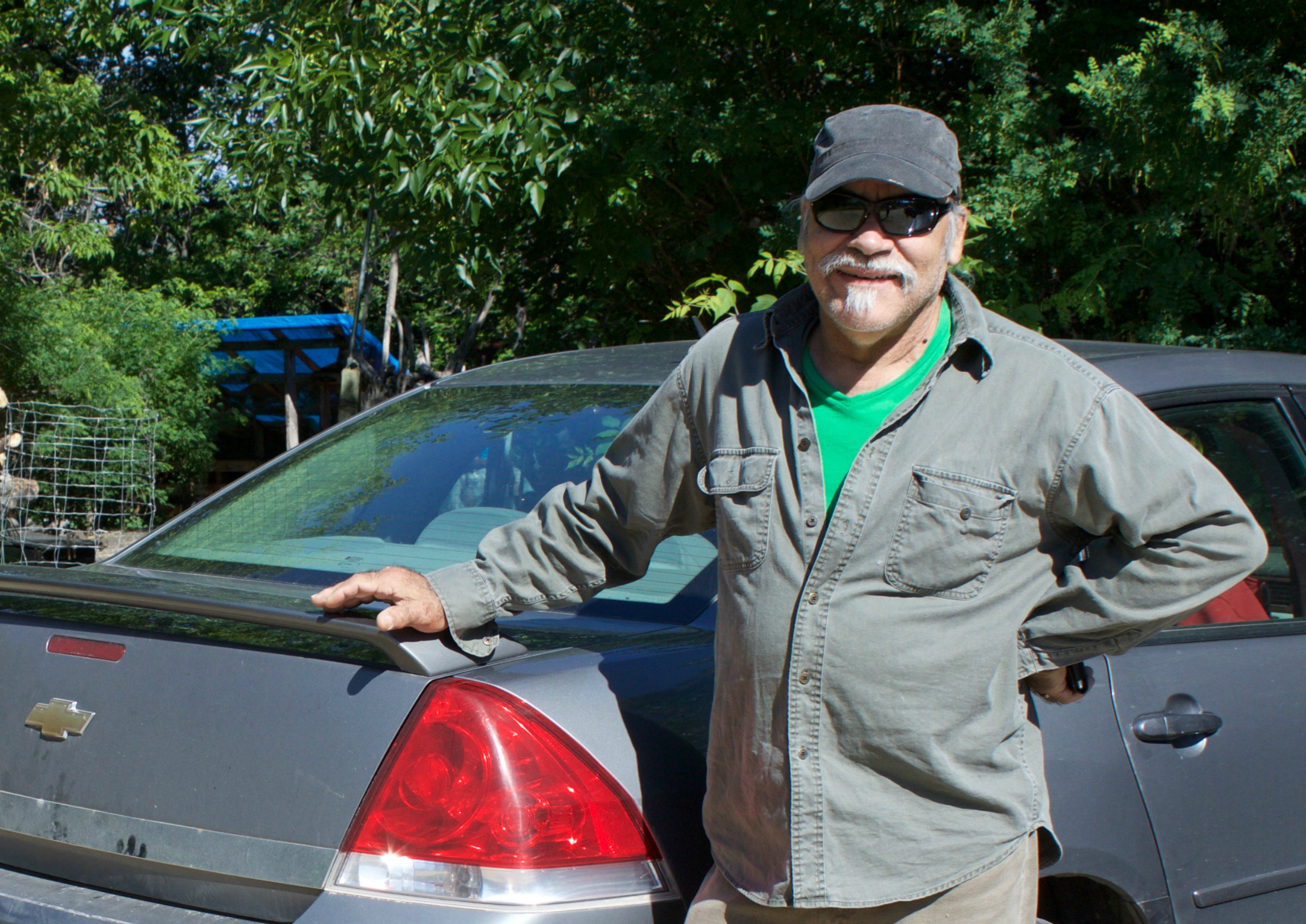Lifelines
If there is a state of mind to the prairies, it is a lonely one. No matter which highway you take out of Saskatoon, the social and economic centre of the province, the landscape can make you feel as if you are travelling on a loop, with a never-ending backdrop of sky, field, and highway. And no matter how fast you travel, that sky just keeps swallowing the road in front of you.
But it isn’t necessarily a lonely place. People in outlying communities have traditionally relied on social collectives – from grain growers associations to supply co-operatives – to survive.
The STC was created in 1946 by premier Tommy Douglas in the heyday of the province’s social democratic movement. That was one year before the province’s Hospital Services Insurance Plan, which became a pre-curser to the federal government’s Medicare plan. Like health insurance, the STC was a lifeline for people who relied on it – like Michael Gaudet.
Gaudet, 60, lives in Manitou Beach, a small village on the edge of Little Manitou Lake, a saltwater lake whose healing waters feed a mineral spa about 120 km southeast of Saskatoon.
Gaudet suffered kidney failure when he was 19, but after undergoing a transplant in 1979 – thanks to a donation from his brother – Gaudet went more than 34 years without needing dialysis, until 2014.
He paints landscapes, wildlife and portraits, but he is perhaps best known for his roadside murals decorating the countryside.

He wears his hair tied in the back, with a cap, a mustache and a goatee. In a slow, expressive baritone, Gaudet offers a common refrain for those who find it difficult to rationalize the government’s decision to cut the STC: “it’s almost like they intentionally ran the corporation into the ground.”
Gaudet needs to travel to Saskatoon three times a week for kidney dialysis that lasts four hours a session.
Until he couldn’t, he took those trips on the bus. Those travelling for physician-prescribed treatments were able to get a medical pass at a discounted rate for unlimited travel, on one STC route, for 30 days. For Gaudet, that was roughly $70 per month for 24 trips. That pass made it more affordable than driving, which for Gaudet now costs about $20 for a one-way trip.
He’s an author, an advocate for organ donation and a community organizer, running online support groups for kidney health.
In early summer 2018, he was working on a billboard-sized mural in his backyard, three and a half metres high, supported by a wooden frame. It was for the town of Tisdale’s centennial celebration.

Gaudet claims about 18,000 km per year in medical mileage on his tax return. [Photo © Lisa Johnson]
He had his gripes about the bus service, as some former riders do.
“To tell you the truth it tried my patience, because they did so many milk stops along the way,” he said.
The large bus often only had three or four passengers, and could have operated cheaper passenger vans on the route, he said. (The STC tried passenger vans for a while, but the company heard too many complaints and they were quickly phased out, according to a former manager of financial reporting at STC, Trina Lees. Patrick Wilson, a mechanic who was laid off when the STC was shut down, also said that larger busses lasted longer, up to 15 years, and were just as fuel efficient as passenger vans on the highway.)
During one trip in the winter, the bus Gaudet was riding experienced a major mechanical breakdown, at which point he said he lost a lot of faith in the company.
But it was affordable and kept him from driving, which can be dangerous.
“I liked taking the bus because I could relax. And close my eyes.”
Without the bus, driving home from the hospital in Saskatoon can be a test, he said, because he is so tired and groggy after dialysis.
“I have a coffee, open up the windows and drive. There have been times where I had to yell at myself to wake up so I didn’t close my eyes. Sometimes I’ll pull over, get out of the car, stretch, take a couple of deep breaths. Half of the time going home I’m okay, but the other half, I’m really tired,” he said.
He and his wife, Sharon Gibson, have lived in Manitou Beach for more than 20 years. The front entrance of their home, shaded by trees and hanging plants, is painted bright yellow. It’s also an eclectic gift shop stocked with local jewelry, pottery, dandelion salve, books and paintings.
Despite being a popular tourist destination, the village counts less than a few hundred official residents, and property is affordable.
The cost of living in Manitou Beach is “within our grasp,” Gaudet said. Moving to Saskatoon isn’t something he and his wife can financially cope with.
“My wife and I are self-employed artists, so we can’t plunk down $300,000 on a house,” he said.
When the STC shut down, Gaudet put up a poster in town. It had strips of paper with numbers at the bottom, offering a ride-share to anyone going to Saskatoon, three times a week. Most of the time he rides by himself, but he does get calls from people wanting to catch a ride and pitch in for gas.
“I’m just one of the lucky ones who has a vehicle,” he said.